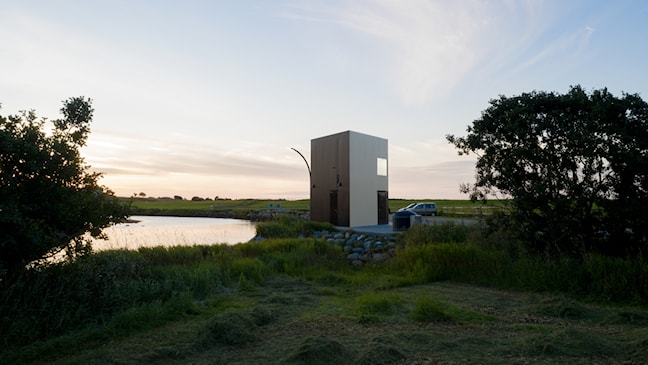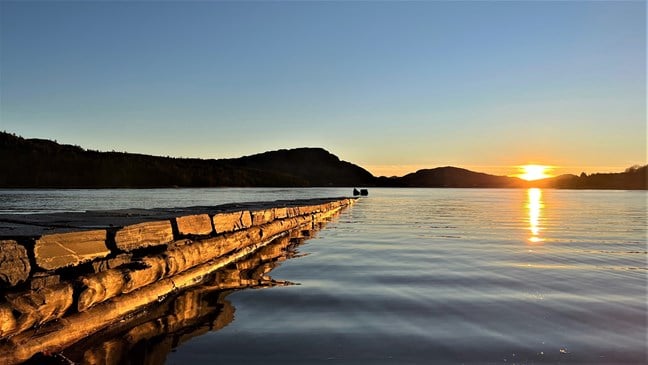Rever & Drage
Farstadsanden
Farstandsanden is a popular outdoor recreation area, with trail connections to Nordneset Lighthouse and Julshamna.
- Architect:
- Rever & Drage
- Landscape architect:
- Grindaker AS
- Finished:
- 2020

The existing toilet facilities were shabby and rundown, and the car park by the extensive sandy beach was too small.
In order to highlight the long lines of the landscape, we have put up a pine heartwood fence with aluminium poles along the area. The fence also helps to lend structure to the parking area, define the trail and reduce traffic on the protected sand dunes. The toilet building is clearly visible in the parking area, but should not detract too much attention from the simple fence. The location of the toilet building within the area and its interior design were determining factors for the choice of the triangular shape. The building has a surface consisting of seawater-resistant aluminium. At the far end of the parking area there is a barrier that will allow tractors to pass but hinder other traffic. The parking area consists of reinforced grass, which creates a friendly expression.
Landscape architect for the project: Grindaker AS
Sundshopen
Lake Sundshopen consists of a mix of sea and fresh water, so-called brackish water. The channel to the sea is about 1 km southwest of the swimming spot.
- Architect:
- Rever & Drage
- Finished:
- 2023

The narrow channel to the sea is about 1 km southwest of the swimming spot. At high tide, it brings salt water into the flora and fauna of Sundshopen, which includes valuable underwater eelgrass meadows, saltmarsh sedge (a grass species), Eurasian curlew, lesser black-backed gull, and various other birds and fish species, which together constitute a unique biological environment.
A key element at this place is a traditional jetty made of stone and timber, extending from the shore all the way out to where the lake bottom suddenly drops. Such sloping piers have traditionally been part of the coastal landscape in the western and northern parts Norway.
The reason why the jetty was constructed in this way is that with a firm sloping cover that follows the slope of the bottom into the sea, you can get into and out of a boat regardless of the tidal phase. This was particularly relevant before pontoon piers became common along the coast. A jetty also provides protection from from wind and waves, which a pontoon pier does not to the same degree. The historical qualities of such structures are continued in that the jetty here at Sundshopen was built using traditional craft methods.
The jetty also serves as an indicator of the variations in the water level through the months and seasons at Sundshopen.
Another distinctive feature of this place is the dense grove of deciduous forest, surrounded by open farmland. The grove is highlighted by letting the path to the beach run straight through the forest. The toilet building with its modern design, built in aluminium, marks the entrance to the area. Access is thus given a clear direction, as you park your car at the north end of the area and walk through the dense forest before ending up in the open plain down by the water.
Seating benches have been placed around in the area so that you can find a good place to sit with regard to the sun, wind and weather conditions at the edge of the forest.
The project is a finely tuned collaboration between Architect Rever & Drage and Landscape Architect Eirik Dalland of Grindaker AS.